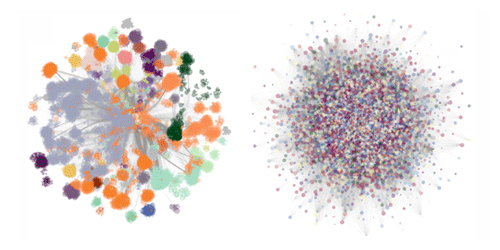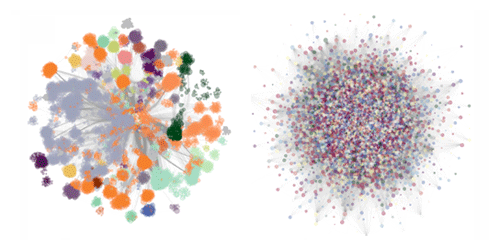Why the Darknet is Robust
The Darknet is a hidden network of web services accessible only through protocols that guarantee privacy and anonymity. Because it’s used for sensitive and sometimes illicit purposes—from drug sales to the sharing of articles outside of publisher paywalls—the Darknet is a frequent target of cyber attacks. The fact that these attacks have generally failed could be because of the hidden network’s unique topology, according to Manlio De Domenico and Alex Arenas at the Rovira i Virgili University in Tarragona, Spain. The researchers used network theory to analyze the Darknet, finding that its decentralized network of “nodes” make it more resilient to attack compared to the rest of the Internet.
Relying on data from the Internet Research Lab at the University of California, Los Angeles, the team characterized the Darknet’s topology. They then developed a model that describes the way information is relayed in the Darknet with “onion routing,” a technique that encapsulates messages in multiple encryption layers. This model allowed the researchers to simulate the Darknet’s response to three types of disturbances: attacks that target specific network nodes, random failures of some nodes, and cascades of failures that propagate through the network.
Their analysis shows that, to cause major disruptions, attacks need to target 4 times the number of nodes in the Darknet as in the Internet. Moreover, cascaded failures are more easily corrected in the Darknet by adding network capacity. The authors attribute this resilience to the Darknet’s relatively decentralized topology, which emerges spontaneously from the use of onion-routing protocols. In contrast, the Internet has a more heterogeneous structure, consisting of highly interconnected hubs that provide stability but also make the whole system potentially vulnerable.
This research is published in Physical Review E.
–Matteo Rini
Matteo Rini is the Deputy Editor of Physics.





